Table of content
Coarse cornmeal, often overlooked in modern kitchens, is a versatile ingredient with roots in global cuisine. From the hearty polenta of Italy to the soul-warming grits of the American South, this coarse-ground dried corn product offers a unique texture and earthy flavor that can elevate both savory and sweet dishes. Yet, many home cooks struggle to unlock its full potential, often ending up with gritty porridges or dry baked goods. This article delves into the nuances of working with coarse cornmeal, exploring techniques, recipes, and creative applications to transform this humble ingredient into culinary gold.
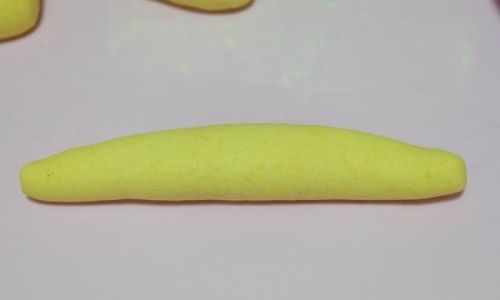
Understanding Coarse Cornmeal: Grain, Texture, and Varieties
Coarse cornmeal is made by grinding dried corn kernels into a rough, sandy texture. Unlike its finer counterparts, which dissolve smoothly into batters and doughs, coarse cornmeal retains a distinct crunch and hearty mouthfeel. This texture makes it ideal for dishes requiring substance, such as polenta, cornbread, or fried coatings.
Varieties Matter:
- Stone-Ground vs. Steel-Ground: Stone-ground cornmeal retains more of the corn’s hull and germ, yielding a richer flavor and coarser texture. Steel-ground varieties are smoother but lack depth.
- White vs. Yellow Cornmeal: White cornmeal, common in Southern U.S. cooking, has a mild, sweet taste, while yellow cornmeal (popular in Italian polenta) offers a robust, corn-forward flavor.
- Degerminated vs. Whole-Grain: Degerminated cornmeal lacks the nutrient-rich germ, resulting in a longer shelf life but less complexity. Whole-grain options pack more fiber and flavor.
Essential Techniques for Cooking with Coarse Cornmeal
Mastering coarse cornmeal begins with understanding its behavior under heat and moisture. Here’s how to avoid common pitfalls:
The Simmering Method
Coarse cornmeal requires slow, patient simmering to soften its granules without scorching. For polenta or grits:
- Ratio: Use a 4:1 liquid-to-cornmeal ratio (e.g., 4 cups liquid for 1 cup cornmeal).
- Liquid: Opt for water, stock, or milk, depending on the dish.
- Stirring: Stir constantly with a wooden spoon to prevent clumping.
- Time: Simmer for 30–45 minutes until creamy.
The Baking Method
When using coarse cornmeal in baked goods like cornbread or muffins:
- Combine with Flour: Mix cornmeal with all-purpose or whole-wheat flour to balance texture. A 1:1 ratio works well.
- Add Leaveners: Baking powder or soda ensures rise.
- Fat is Key: Use butter, oil, or lard for moisture.
The Frying Method
Coarse cornmeal’s coarse grind makes it excellent for crispy coatings:
- Mix with Flour: Combine 1:1 cornmeal and flour for a crunchy exterior.
- Season Generously: Add salt, pepper, paprika, or herbs.
- Fry at High Heat: Use a neutral oil (e.g., canola) at 350–375°F (175–190°C).
Classic Recipes to Master
Creamy Polenta with Parmesan and Herbs
A staple of Italian cuisine, polenta transforms coarse cornmeal into a velvety side dish.
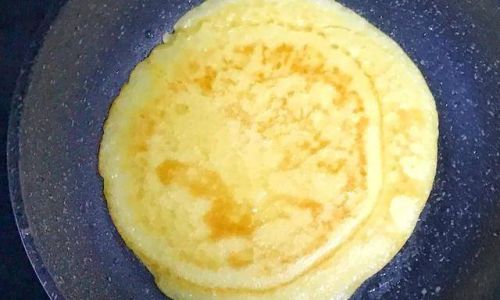
Ingredients:
- 1 cup coarse yellow cornmeal
- 4 cups chicken or vegetable stock
- 1 cup whole milk
- 1/2 cup grated Parmesan cheese
- 2 tbsp unsalted butter
- 1 tbsp fresh rosemary, chopped
- Salt and pepper to taste
Instructions:
- In a heavy-bottomed pot, bring stock and milk to a simmer.
- Whisk in cornmeal gradually to prevent lumps.
- Reduce heat to low and stir every 5 minutes for 30–40 minutes.
- Stir in Parmesan, butter, and rosemary. Season with salt and pepper.
- Serve immediately with ragù, roasted vegetables, or braised meats.
Pro Tip: For firm polenta, pour into a greased pan, chill, then slice and grill.
Southern-Style Skillet Cornbread
A cast-iron skillet and coarse cornmeal are the secrets to a crispy, golden crust.
Ingredients:
- 1 cup coarse white cornmeal
- 1 cup all-purpose flour
- 1 tbsp baking powder
- 1 tsp salt
- 1/4 cup sugar (optional)
- 1 1/4 cups buttermilk
- 1/4 cup melted butter
- 2 large eggs
Instructions:
- Preheat oven to 425°F (220°C). Place a 10-inch cast-iron skillet inside to heat.
- Whisk dry ingredients in a bowl.
- In a separate bowl, whisk buttermilk, butter, and eggs.
- Combine wet and dry ingredients until just mixed.
- Carefully remove hot skillet from oven, coat with oil, and pour in batter.
- Bake 20–25 minutes until golden. Serve with honey butter.
Variation: Add jalapeños, cheddar, or bacon for a savory twist.
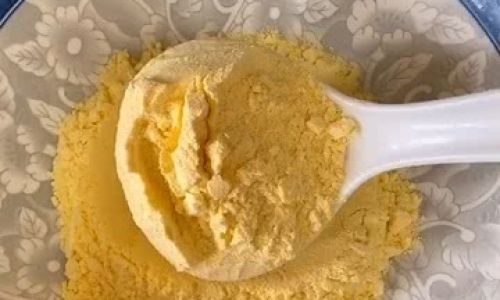
Shrimp and Grits
A Southern classic where creamy grits meet spicy shrimp.
Ingredients:
- 1 cup coarse stone-ground grits
- 4 cups water or stock
- 1/2 cup heavy cream
- 1 lb shrimp, peeled
- 4 slices bacon, chopped
- 2 garlic cloves, minced
- 1 lemon, juiced
- Hot sauce to taste
Instructions:
- Cook grits in simmering liquid for 45 minutes. Stir in cream.
- In a skillet, cook bacon until crisp. Remove, leaving fat.
- Sauté shrimp in bacon fat until pink. Add garlic and lemon juice.
- Serve shrimp over grits, topped with bacon and hot sauce.
Creative Twists on Coarse Cornmeal
Cornmeal Pancakes with Berry Compote
Swap flour for cornmeal in breakfast pancakes for a rustic texture.
Ingredients:
- 1 cup coarse cornmeal
- 1/2 cup all-purpose flour
- 2 tsp baking powder
- 1 cup milk
- 1 egg
- 2 tbsp maple syrup
- Mixed berries, cooked with sugar
Instructions:
- Whisk dry ingredients. Mix wet ingredients separately.
- Combine until just smooth. Cook on a greased griddle.
- Serve with berry compote and whipped cream.
Spicy Cornmeal-Crusted Catfish
A crispy coating for fried fish.
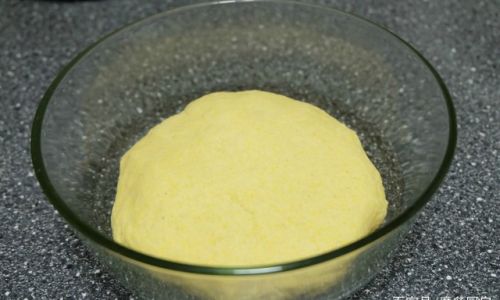
Ingredients:
- 1 cup coarse cornmeal
- 1/2 cup corn flour
- 2 tsp Cajun seasoning
- 4 catfish fillets
- Oil for frying
Instructions:
- Mix cornmeal, corn flour, and seasoning.
- Dredge fish in buttermilk, then cornmeal mix.
- Fry at 350°F (175°C) until golden.
Cornmeal-Lemon Cake
A moist, tender cake with a cornmeal crunch.
Ingredients:
- 1 cup coarse cornmeal
- 1 cup all-purpose flour
- 1 tsp baking powder
- 1/2 cup olive oil
- 3/4 cup sugar
- Zest of 2 lemons
- 3 eggs
Instructions:
- Preheat oven to 350°F (175°C). Grease a loaf pan.
- Whisk dry ingredients. In another bowl, whisk oil, sugar, zest, and eggs.
- Combine mixtures. Pour into pan and bake 40–45 minutes.
Global Inspirations
Italian Polenta Under a Veal Ragù
Layer slow-cooked polenta with a rich tomato-based ragù and grated cheese for a hearty meal.
Mexican Arepas
Mix cornmeal with water and salt to form patties, then grill and stuff with cheese, beans, or avocado.
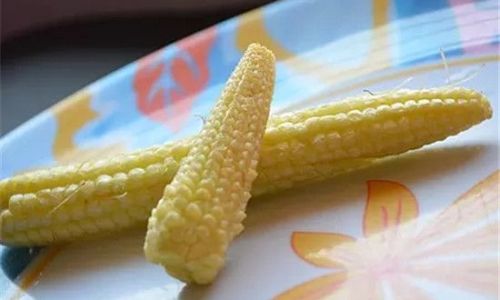
African Ugali
A stiff cornmeal porridge served with stews in East Africa.
Troubleshooting Common Issues
- Lumpy Polenta: Use a whisk during the initial mixing and a flat-edged wooden spoon for stirring.
- Dry Cornbread: Increase buttermilk or add a splash of yogurt for moisture.
- Gritty Grits: Simmer longer and add cream or cheese for smoothness.
Conclusion
Coarse cornmeal is more than a pantry staple—it’s a gateway to texture, flavor, and tradition. Whether you’re simmering it into polenta, baking it into cornbread, or frying it into a crispy coating, this ingredient rewards patience and creativity. Experiment with global recipes, adjust textures to your liking, and don’t shy away from mixing it with other grains or flours. The key to mastering coarse cornmeal lies in understanding its personality: rugged yet adaptable, humble yet capable of greatness. So next time you reach for a bag of cornmeal, remember—you’re holding a world of possibility in your hands.
Final Tip: Store coarse cornmeal in an airtight container in a cool, dry place to preserve its freshness and flavor. With proper care, it can last up to a year, ready to elevate your next meal.




0 comments